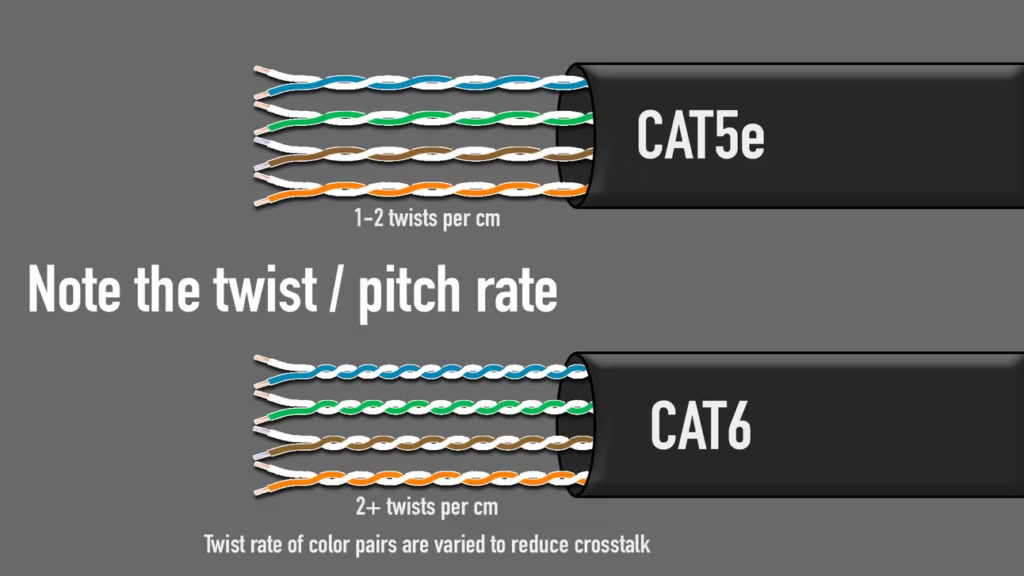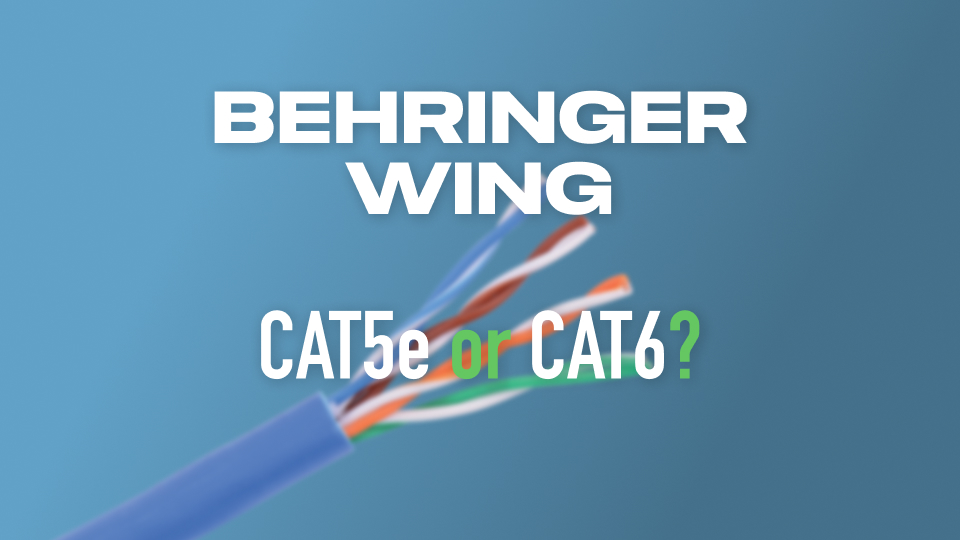WING Compact & WING Rack

With the release of new Behringer WING models (WING Compact, WING Rack, and WING Black), many are asking: Should I use CAT5e or CAT6 cables with for AES50 connections?
The short answer? Shielded CAT5e is the way to go for reliable AES50 performance. Here’s why.
Want a deep dive into the Behringer WING Compact?
Check out my full breakdown video here!
AES50 SuperMAC Explained
AES50 SuperMAC is a low-latency, bi-directional audio protocol with a latency of just 0.625 ms. It works over a shielded CAT5e cable up to 100m (328 feet) and supports 48 or 96 kHz sample rates. Here’s the channel capacity:
- 48 kHz: 48 input and 48 output channels
- 96 kHz: 24 input and 24 output channels
This protocol is used by popular consoles like:
- Behringer WING (WING, WING-BK, WING Compact, WING Rack)
- Behringer X32 (X32, X32 Compact, X32 Producer, X32 Rack, X32 Core)
- Midas M32 (M32, M32 Live, M32R, M32R Live, M32C)
Can I Use CAT6 for AES50?
Short answer: No, you shouldn’t—but it might work in some cases.
AES50 is specifically designed for shielded CAT5e. While some setups might function with CAT6, longer cable runs can cause issues due to differences in twist rates.
AES50 Pinout on Shielded CAT5e
Here’s the pinout setup for AES50 on CAT5e:
- Pin 1 (O/W): Audio Data Transmit +
- Pin 2 (O): Audio Data Transmit –
- Pin 3 (G/W): Audio Data Receive +
- Pin 4 (B): Sync Signal Transmit +
- Pin 5 (B/W): Sync Signal Transmit –
- Pin 6 (G): Audio Data Receive –
- Pin 7 (Br/W): Sync Signal Receive +
- Pin 8 (Br): Sync Signal Receive –
- Shield: Shield
This pinout works with T568A and T568B cables as long as both ends follow the same wiring standard. The listed colors use the T568B standard. With the T568B standard the Audio Data Transmit is on the Orange Pair, Sync Signal Transmit on Blue, Audio Data Receive on Green, and Sync Signal Receive is on Brown.
Differences Between CAT5e and CAT6

| CAT5e | CAT6 | |
| Twist Rate | ~1-1.5 twists/cm | Over 2 twists/cm (varies) |
| Interference Protection | Moderate | Better (for data networks) |
| AES50 Compatibility | ✅ Reliable | ⚠️ Less reliable on long runs |
CAT6’s Higher Twist Rate Causes Issues for AES50
CAT5e cables have a uniform twist rate for all pairs, around 1-1.5 twists per cm. CAT6, on the other hand, has a higher and varying twist rate (over 2 twists per cm), which reduces interference in networking but causes issues with AES50.
CAT6 cables have:
- Tighter, non-uniform twists → Can misalign audio & sync signals.
- Longer internal wire paths → Less stable phase alignment.
- Reduced AES50 distance reliability → Especially beyond ~75 feet.
Shorter Reliable Distance with CAT6
Since AES50 relies on precise signal timing, CAT6 cables can introduce phase issues, making your connection less stable—especially on longer cable runs.
CAT6 cables have a tighter twist rate, meaning the actual wire length inside is longer than CAT5e for the same physical distance. This can create phase issues, making AES50 less reliable over long runs.
Shielded CAT5e: Why It Matters
Initially, when the Behringer X32 was released, unshielded CAT5e cables were common. However, over time, it became clear that shielded CAT5e with properly terminated connectors significantly improves reliability.
To avoid dropouts and connection issues, use:
✅ Shielded CAT5e cables
✅ Properly terminated RJ45 connectors
✅ Neutrik EtherCon ends
Types of Cables for AES50
For AES50, shielding is critical. Here’s what works and what doesn’t:
❌ Not Recommended: These will not work for AES50 reliably:
- U/UTP (unshielded)
- U/FTP (unshielded with foil)
✅ Recommended: Use shielded types like:
- F/UTP (foiled with unshielded twisted pairs)
- S/UTP (shielded with unshielded twisted pairs)
- SF/UTP (shielded and foiled)
- F/FTP (foiled with foiled twisted pairs)
- S/FTP (shielded with foiled twisted pairs)
- SF/FTP (shielded and foiled with foiled twisted pairs)
💡 Pro tip: Make sure to terminate the drain wire correctly to the RJ45 connector’s shield and use Neutrik EtherCon ends for durability.
Conclusion: Use the Right Cable!
For rock-solid AES50 connections, always use:
✅ Shielded CAT5e
✅ Shielded RJ45 connectors
✅ Neutrik EtherCon ends
While CAT6 might work for short distances, if you experience dropouts or connection instability, the first thing to check is your cable. Swapping to properly shielded CAT5e should fix most issues.
Until next time,
Drew
